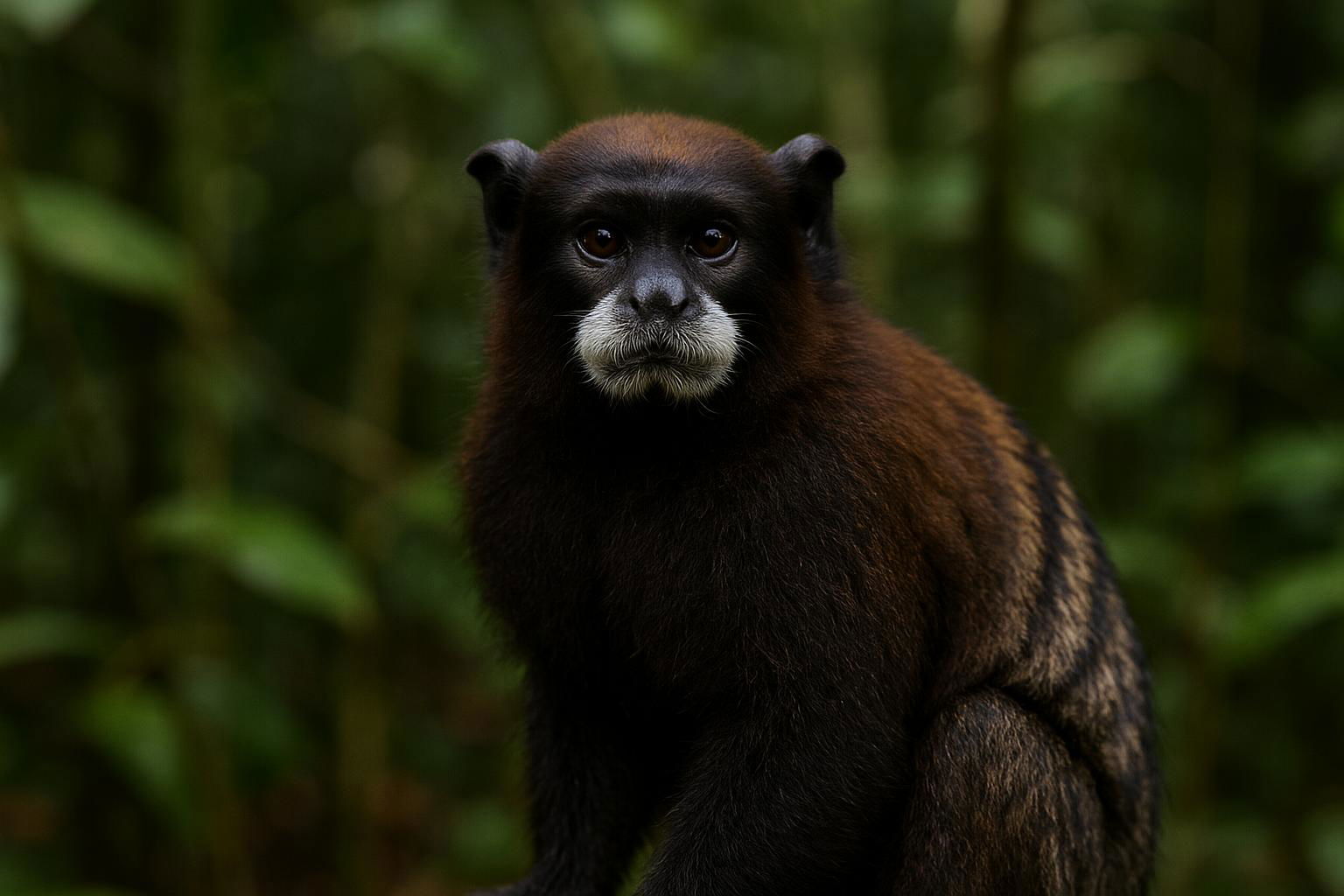
Brown-Mantled Tamarin
Saguinus fuscicollis
The Brown-Mantled Tamarin (Saguinus fuscicollis) is a small, agile primate found primarily in the tropical rainforests of South America, particularly in Peru, Brazil, and Bolivia. Notably characterized by its dense fur, the Brown-Mantled Tamarin sports a distinctive brown coating along its back and shoulders, which gracefully transitions to lighter shades on its belly and limbs. Weighing in at about 400 to 550 grams, this diminutive creature exhibits a sleek, streamlined form ideal for navigating its arboreal habitat.
Brown-Mantled Tamarins are highly social animals, typically living in groups of 4 to 15 individuals. These groups engage in cooperative care of the young, with multiple members participating in nurturing duties. Their communication is rich and varied, consisting of an assemblage of vocalizations ranging from chirps to high-pitched trills, which help maintain group cohesion and alert members to potential threats.
Their diet is omnivorous, primarily comprising fruits, insects, and nectar, with occasional indulgence in small vertebrates and bird eggs. Such dietary adaptability allows them to thrive in diverse environments, although their preference leans toward regions abundant in floral variety.
Adapted to a life in the treetops, these tamarins display remarkable agility and dexterity, often leaping between branches with impressive precision. As key seed dispersers, they play an essential role in maintaining the ecological balance of their rainforest ecosystems. Despite their ecological significance, the Brown-Mantled Tamarin faces habitat loss due to deforestation and human encroachment, making conservation efforts increasingly vital for their continued survival.

 All Species & Breeds
All Species & Breeds
 Highland Cattle
Highland Cattle
 Miniature Donkeys
Miniature Donkeys
 All Species Directory
All Species Directory
 Highland Cattle in Virginia
Highland Cattle in Virginia
 Miniature Donkeys in Texas
Miniature Donkeys in Texas












